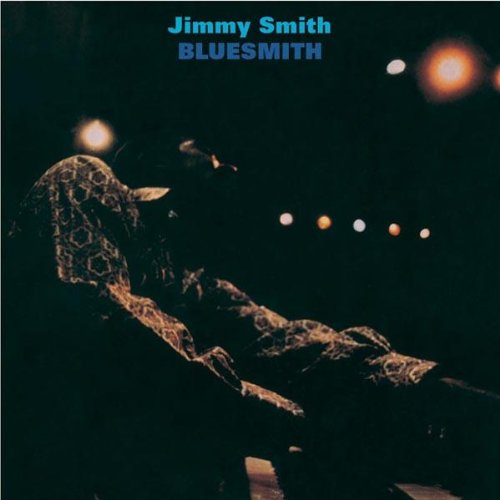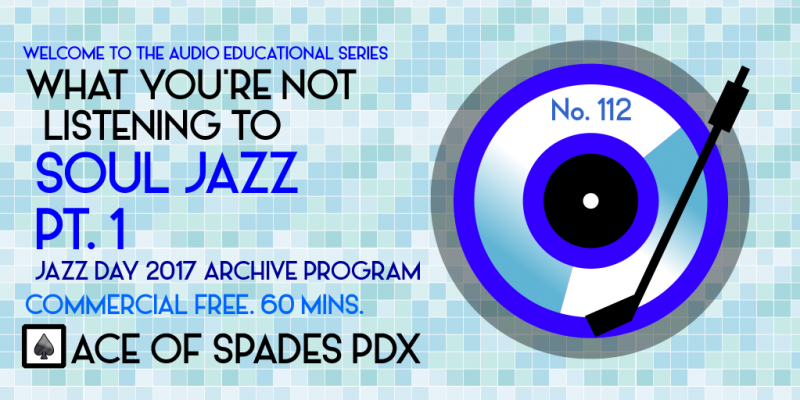Podcast: Play in new window | Download | Embed
The first of the final two International Jazz Day archive programs, featuring Jazz music’s biggest and most lasting impact on popular music. #jazzday #souljazz #jazz
Introduction, Pt. 1
What exactly is Soul Jazz? Technically speaking, it is a sub-genre of Jazz music that incorporates strong influences from Rhythm and Blues, Soul, Gospel, and eventually funk and psychedelic music. Many consider it to be an extension of Jump Blues, much like Rock and Roll is. More often than than not, songs tend to be shorter than many traditional Jazz pieces, and the performing combos tend to be smaller. Many of the the songs in the genre focus on the organ or the saxophone and tend to have repeating riffs, not unlike many Pop or Rock songs.

But this only tells some of the story. All of the styles I have mentioned here all derive from one single source from over 100 years ago: The Blues. Some of the artists here resisted the Soul Jazz label, preferring to call themselves Jazz artists or Jazz Fusion artists. One artist we will feature actually wrote and recorded what is considered by many to be one of the quintessential early Rock and Roll instrumentals.
Soul Jazz could have developed no where else except for in the United States and at no other time than during the 1950’s. Within a decade, it spread and merged with other styles around the world, most notably Caribbean, Latin and African Jazz musical styles.

The one thing that holds all of these tracks together is a blending of the worlds of Soul and Jazz, regardless of what label they had then or will carry forward. Sadly, around the 1950’s, an atmosphere of elitism and snobbery infiltrated itself into Jazz culture. Even Miles Davis, arguably the greatest superstar Jazz has ever created, was wary of those who would put down on other forms of Jazz as being hip or cool.
In his own words about Jazz elitism: “Those people who say there’s nothing but Bop are just stupid. It shows how much they don’t know.”

This program will be continued in a few days. To hear the entire three hour program in its entirety, including a free download of the poster, visit this link, which will take you to my design site.
First Part
- One Mint Julep, Ray Charles, 1961, Genius+Soul+Jazz
- The Broilers, Eddie “Lockjaw” Davis, 1959, Cookbook, Vol. 2
- Loving You Was Like A Party, Marlena Shaw, 1974, Who Is This Bitch, Anyway
- The Sidewinder, Lee Morgan, 1963, The Sidewinder
Second Part
- Cleo’s Mood (original mono single mix), Junior Walker & The All Stars, 1965, Shotgun
- Blues 3+1, Jimmy Smith, 1972, Bluesmith
- Duffin Around, “Brother” Jack McDuff and David “Fathead” Newman, 1968, Double Barreled Soul
- Push Push, Herbie Mann, 1971, Push Push
Finale
- Mercy, Mercy, Mercy (live), Cannonball Adderley, 1966, Mercy, Mercy, Mercy!
Love to you all.
Ben “Daddy Ben Bear” Brown Jr.
Host, Show Producer, Webmaster, Audio Engineer, Researcher, Videographer and Writer
Instagram: brownjr.ben
Twitter: @BenBrownJunior
LinkedIn: benbrownjunior
Design Site: aospdx.com
“Copyright Disclaimer Under Section 107 of the Copyright Act 1976, allowance is made for ‘fair use’ for purposes such as criticism, comment, news reporting, teaching, scholarship, and research. Fair use is a use permitted by copyright statute that might otherwise be infringing. Non-profit, educational or personal use tips the balance in favor of fair use.”
